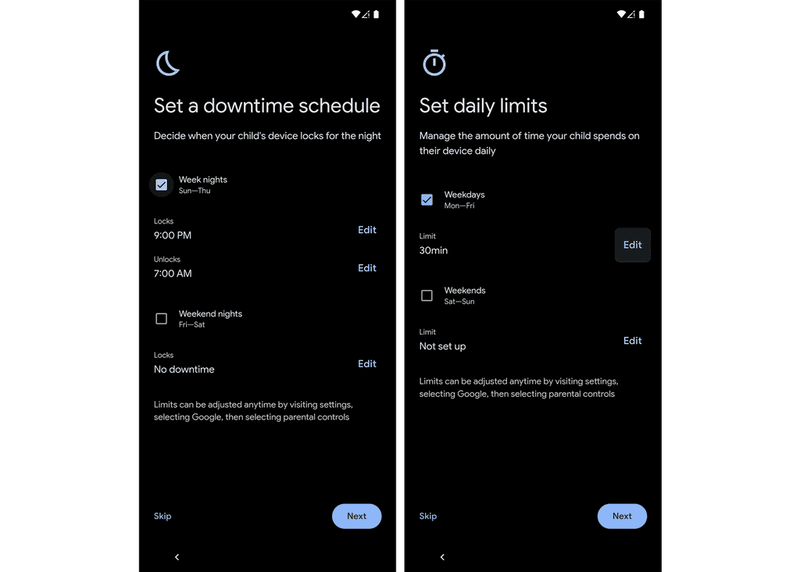Let’s skip the part where I pretend this is easy. You’re tired of fighting about screens.
You see the other parents caving in, handing over those tiny glowing rectangles, and you wonder if you’re the last holdout. Maybe you’re not even sure why you’re resisting, but a part of you just knows—your gut doesn’t want this for your kid, not yet. I get it.
The pressure’s real and so is the guilt. But this isn’t about being perfect or anti-technology. It’s about holding the line when every commercial, every birthday party, and every bored Saturday afternoon tells you to just give in. You want more for your kid—more connection, more real life, more childhood.
So let me help you with that so you can see what that looks like, and how can you actually pull it off.
1. Start the Conversation Early
The question hit me in the cereal aisle: “Why can’t I have a phone?” My daughter’s face was all hope and confusion, like I’d just denied her oxygen. I froze—because it wasn’t the first time, and I knew it wouldn’t be the last.
I wish someone had told me to start this talk before the age of “everyone at school has one.” You don’t have to launch into a lecture. Just explain, in your own tired, honest words, why you’re not ready for her to have a smartphone yet.
Let her see your doubts, not just your rules. If you make it an ongoing conversation, not a one-time verdict, you build trust. Kids can handle more nuance than we give them credit for. The sooner you open up about your concerns, the less dramatic it feels later. Think of it as setting up camp before the storm.
2. Create Clear House Rules
Have you ever tried playing a board game without knowing the rules? That’s how most kids feel about screens. If your boundaries are fuzzy, they’ll test every edge until something snaps—usually your patience.
Make your house rules about phones and screens glaringly obvious. Write them out, stick them on the fridge, and be weirdly specific. For example: “No phones at dinner,” or “No devices in bedrooms after 8pm.”
Don’t announce rules when you’re frustrated or mid-argument. Pick a calm moment, maybe over pancakes, and talk through what works for your family. You’ll be shocked how much easier it is to hold your ground when everyone knows exactly where the line is. No more “But you never said!”—because you literally did, in black and white.
3. Be Honest About Why You Care
You can’t fake conviction—not with kids. They know when you’re parroting advice from a parenting blog. What they want is to see your real reasons: the fears, the hopes, the messiness.
Maybe you’re scared of the bullying, or the weird stuff that pops up online late at night. Maybe you’re just tired of watching kids disappear behind screens. It’s okay to say all that. Show your kid that this isn’t about punishment—it’s about protecting something you deeply value.
Let them see your vulnerability. Admit you don’t have all the answers. Kids respect honesty, even if they don’t like your decisions. The more human you are about your worries, the more likely they are to listen (even if they roll their eyes).
4. Delay with a Simple Phone
Sometimes you need a practical detour. When your kid begs for a phone, offer a basic flip phone or a call-and-text-only device. It’s not a punishment—it’s a strategy.
This move lets you sidestep the pressure without caving to the full smartphone leap. Your child gets a slice of independence, you keep the internet at arm’s length. Let them decorate it with silly stickers or a keychain—make it theirs.
It might not win you any cool points at first. But it buys you time. You get to say yes to connection and safety, while saying no to group chats and late-night doomscrolling. Sometimes, an “old school” workaround is the best kind of progress.
5. Band Together with Other Parents
There’s power in numbers, but it takes guts to gather your people and admit you’re worried. Sometimes it feels like you’re the only one not giving in, but chances are other parents feel the exact same way.
Start a group chat (ironic, but useful) or host a coffee night. Talk openly about screen expectations and agree to hold the line together. When your kid says, “But everyone else has one!” you can point to real families backing you up.
Peer pressure doesn’t only work on kids. It works on us too. Build a tribe of like-minded parents, and suddenly, you’re not alone in the wild. It’s a lot easier to stick to your guns when you know someone’s right there beside you.
6. Use Humor to Deflect Pressure
Humor cracks the tension in ways rules never will. When the whining gets loud or the comparisons start, try a joke. It’s both armor and olive branch.
Think: “You want a phone? How about this beauty?” (presenting a rotary phone with dramatic flair). Make your refusal funny instead of a lecture. Laughter reminds everyone you’re a person, not just a wall of NO.
Sometimes, the only way to survive is to keep things light. Kids will remember the jokes, even if they act annoyed. Bonus: Humor makes your point—and keeps the conversation from ending in a shouting match or a slammed door.
7. Offer Real-World Alternatives
Every time you say “no” to a smartphone, the universe gives you a new challenge: what do you offer instead? You can’t fill every bored moment, but you can build a house where boredom isn’t an emergency.
Stock up on art supplies, puzzles, books, and weird craft kits. Plan spontaneous family outings—even if they’re just to the laundromat with ice cream after. Point is, give your kid more to remember than screen time arguments.
I’m not saying you have to become the cruise director of your home. But show your kid that there’s a whole world beyond group texts and TikTok dances. Sometimes, a messy art project beats any app on the market for actually making memories.
8. Hold the Line at Milestones
Birthdays. Graduations. End-of-year parties. These are the moments when kids expect the big reveal—the magical, shrink-wrapped smartphone. The pressure is thick, and you’ll feel it deep in your gut.
This is where you show your backbone. Bring a meaningful gift instead—a book, a camera, even a day trip somewhere new. Let the moment be special, but not about a device.
You’re showing your kid that milestones matter, but they don’t have to be tied to a screen. That lesson lasts way longer than the latest app. Hold your ground in these spotlight moments, and you’ll both learn that real celebrations don’t need Wi-Fi.
9. Create Tech-Free Zones at Home
The kitchen table used to be where secrets were spilled and jokes flew. Now it’s where screens sneak into every meal. Want to change the vibe? Claim certain rooms as tech-free terrain.
Think about the spaces that matter most—dining room, bedrooms, maybe even the car. Put up a sign if you have to. Keep a basket at the door for stray devices.
You might get resistance at first, but you’ll also get eye contact and random stories you never knew about. Kids act differently in spaces where screens can’t follow. Sometimes, changing the room changes everything.
10. Model the Behavior You Want
Kids can spot hypocrisy from a mile away. If you’re doomscrolling while telling them to go play outside, the message is already lost. Modeling the behavior you want to see is brutal—but it works.
Make a show of putting your own phone down. Say out loud, “I need a break from this thing.” Let your kid see you wrestle with the same temptations. You’re not perfect—and that’s the point.
When you slip up (and you will), own it. Apologies go a long way. Kids respect realness, not perfection. The more you live your values, the more likely they are to try them on for size.
11. Give Them a Say in the Decision
Ever think about handing over the gavel? Invite your kid to help set the rules. Ask what scares them about phones, or what they wish you understood.
You might be shocked by their honesty. Some kids are relieved when parents take the decision out of their hands. Others want a say in what’s fair.
Letting them in on the process turns it from a power struggle into a family project. You’re not giving up authority. You’re building buy-in. They’ll fight less if they helped build the fence.
12. Educate About Online Dangers Early
You don’t need a horror story to start the conversation. Bring up online predators, cyberbullying, and privacy risks as facts of life—like teaching them to look both ways before crossing.
The internet is a big, weird neighborhood. Walk your kid through it. Show them why some doors are better left closed.
Let them ask the awkward or scary questions. Don’t sugarcoat, but don’t terrify either. When you treat online safety as an ongoing, honest conversation, kids feel more confident—and less likely to hide mistakes.
13. Use Parental Controls as Training Wheels
Think of parental controls as floaties—not forever, but necessary when the water’s deep. If your kid has limited device access, put up boundaries: app blockers, time limits, safe browsing.
Let them know these controls are there to help them build good habits, not because you don’t trust them. Compare it to how you didn’t let them bike without training wheels on day one.
Eventually, you’ll loosen the reins. But for now, these tech tools are the fence around the playground. The better you explain the why, the less likely you’ll end up as the villain in their story.
14. Offer Delayed Gratification Challenges
Delayed gratification isn’t just a fancy phrase—it’s a survival skill. Challenge your kid to wait, earn, or work toward privileges. Create a chart or set milestones: chores, grades, even family projects.
Don’t make the smartphone the only finish line. Offer small rewards along the way—a movie night, a sleepover, a new art kit. Waiting becomes more doable when the road is lined with good stuff.
Kids love a countdown, even if they pretend not to. The point isn’t to dangle a phone as bait, but to teach patience. That lesson will outlast any device you could buy.
15. Fill Life With Offline Rituals
What if your best memories weren’t about what happened on a screen? Build little rituals that have nothing to do with Wi-Fi—pancake Sundays, card games, walks after dinner.
These habits anchor your family in something real. They become the things your kids look back on when they’re older.
The more you fill their days with traditions, the less space there is for arguments about smartphones. Rituals are the glue. Sometimes, it’s as simple as inventing your own weird holiday for just your family.
16. Make Saying “No” the Norm, Not the Exception
In my house, the answer to “Can I have a phone?” was almost always “Not yet.” If “no” is the baseline, not the outlier, your kid stops expecting you to cave every time.
Consistency is the real magic. When saying “no” is just the way things work, it loses its sting. You’re not the villain—you’re just the grownup who means what she says.
Over time, your child learns that boundaries aren’t personal—they’re normal. The drama fades. You’re left with fewer battles and more peace. Who knew a simple word could have so much power?
17. Let Your Kid See Boredom as a Gift
There’s a weird magic in an empty afternoon. When you resist filling every second with screens, boredom creeps in—and that’s when the good stuff happens.
Kids complain. They roll around dramatically. But eventually, they invent something wild—a game, a story, a new friend out of nowhere.
Let your child feel boredom without panic. Don’t rescue them with a device. You’re giving them the gift of their own creativity. Boredom isn’t the enemy—it’s the doorway to everything else.


















